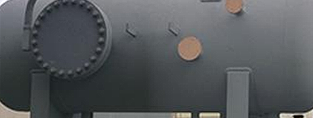
- (03) 5909 8218
- enquiry@fusionweld.com.au
Effects of Flood and Prolonged Submersion on Misplaced Underground Fuel Tanks
January 11, 2017

Engineering expertise swings into action when underground fuel tanks are incorporated into known flood areas. There are drainage conduits to mitigate the effects of the muddy water. The location of each buried vessel receives planning, including a feasibility study that accounts for annual rainfall data. As for misplaced underground fuel tanks, well, the effects of flooding and prolonged submersion require some study, for monsoon-type floods can overwhelm the best drainage solutions.
Corrosion Threats
A storm front moves in, and the ground is saturated with water. The storm transforms the ground into a swamp-like mire. Subsurface vessels are impacted by these adverse weather conditions. The water causes the metal to corrode and age. The steel hull relies on the quality of the alloy when rejecting this oxidizing influence, but that water damage has support. It's backed by soil type, by the acidity or alkalinity content in the muddy water. Now the surrounding ground water is slightly caustic. It also has teeth, the scouring power of that same soil, which will abrade the tank.
Flooding Effects
A number of redundant systems exist to handle these effects. Initially, they're blunted by the presence of a sacrificial cathodic protector. Next, the local architecture and location of the underground vessel help to channel liquids into special drains. These are all beneficial corrosion protection aids, but they can lose efficacy when the volume of the flood water becomes overwhelming. Indeed, the force of a powerful storm can even displace the vessel and cause damage to the surrounding pipework. A damaged vessel seam or corroded hull panel will leak toxic fuel gradually, but this displacement event will critically saturate the local ground, thus drenching it in flammable liquid.
Leak Remediation
A massive leak is at least easy to detect, with emergency services providing a cordoned off barrier that will regulate the situation while an environmental control plan is initiated. It's the slower leak that causes problems, for the fuel leaks into the local water supply and poisons the environment slowly. Flooded urban areas suffer greatly from the after effects of this leakage condition.
Tank buoyancy is affected by prolonged submersion. Water and soil combine on a separate front as a metal eating influence, a corrosion and scouring agent that accelerates in potency as the weather darkens. Thankfully, modern engineering acumen imbues underground fuel tanks with great material and structural overhead, all the design elements that will stop these elemental forces in their tracks.
Contact Details
Fusion - Weld Engineering Pty Ltd
ABN 98 068 987619
1865 Frankston Flinders Road,
Hastings, VIC 3915
Ph: (03) 5909 8218
Optimized by NetwizardSEO.com.au
Recent Posts
- Heat Exchanger Maintenance in Melbourne: Minimising Risk in Power Generation Facilities
- Compressed Hydrogen Storage Vessels: Material Selection, Design & Australian Standards
- Welding QA/QC in Oil & Gas Pressure Vessel Fabrication – Ensuring Code Compliance
- AS1210 vs ASME VIII Pressure Vessel Code: Key Differences for Australian Projects
- Mitigating Hydrogen-Induced Cracking in Pressure Vessels: Engineering and Material Strategies
- Storage Tank Solutions Australia: Field-Erected, Prefabricated & Self-Bunded Explained
- Reducing Environmental Risks: Self-Bunded Tanks in Australian Oil & Gas Operations
- Precision in Production: How Pressure Vessels Are Manufactured for Industrial Safety
- Shell & Tube Heat Exchangers: Improve Thermal Control & Energy Recovery in Petrochemical & Pharmaceutical Plants
- In-Service Inspection for Compressed Air Receivers for Power Plant Shutdown Prevention
- Power Plant Pipe Spooling Fabrication – Get Rapid, Code-Compliant Spools Ready for Installation
- Field Erected Tanks: Safe, Reliable On-Site Fuel Storage Solutions in Australia
Posts 2026
- Heat Exchanger Maintenance in Melbourne: Minimising Risk in Power Generation Facilities
- View all articles…
Posts 2025
- Compressed Hydrogen Storage Vessels: Material Selection, Design & Australian Standards
- Welding QA/QC in Oil & Gas Pressure Vessel Fabrication – Ensuring Code Compliance
- View all articles…
Posts 2024
- Large Process Vessels: Optimising the Design for Maximum Efficiency [2025]
- Pressure Equipment Management System Installation: Detect Equipment Faults Early
- View all articles…
Posts 2023
- Pressure Piping System Inspection: A Gift of Safety for the Holidays
- Deaerator Inspections by Fusion-Weld Engineering and How They Reduce System Downtime
- View all articles…
Posts 2022
- How Fusion Weld Keeps Up With AS-NZS ISO 9001:2008 Standard
- Boiler Equipment Safety Inspection During the Summer Season
- View all articles…
Posts 2021
- Avoid These Factors and Practices that Contribute to Sealing Damage in Pressure Vessels
- Do's And Don'ts Of Industrial Boiler Inspection And Maintenance From Fusion-Weld
- View all articles…
Posts 2020
- What are the Risks and Hazards Involved in Pressure Vessel Equipment?
- How to Know if Your Pressure Equipment Needs Repair or Replacement?
- View all articles…
Posts 2019
- Factors that Contribute to Pressure Vessel Failure
- Pressure Vessel Regulations in Australia: What are the Mandatory Requirements?
- View all articles…
Posts 2018
- Pros and Cons of Spherical vs. Cylindrical Pressure Vessels
- What are the Different Hazard Levels in Pressure Vessels?
- View all articles…
Posts 2017
- Transportable Pressure Vessels: The Importance of Inspection and Safety Checks
- Fracture Mechanics and Stress Analysis of Cracks in Pressure Vessels
- View all articles…
Posts 2016
Posts 2015
- What Are Deaerators & Feedwater Vessels?
- Precautions and Safety for Compressed Air Receiver Vessels
- View all articles…
Posts 2014
- Demonstrating In-process Inspection Procedures
- Static Grounding Practices and Standards
- View all articles…